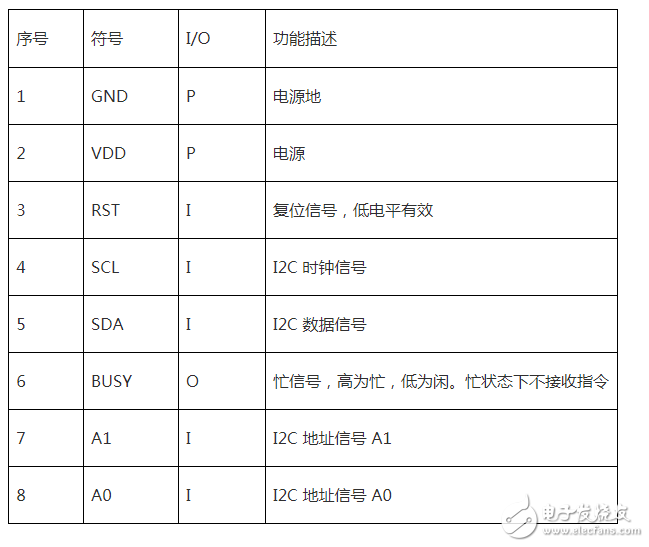
资料下载

lcd12864中文资料大合集(arduino lcd12864+lcd12864程序)
lcd12864液晶屏相关资料,包括arduino lcd12864,以及相关的设计方案,还有包括lcd12864中文资料数据使用手册,lcd12864程序,lcd12864串行时序的实现,lcd12864显示汉字程序,lcd12864引脚说明。
lcd12864点阵的液晶屏主控芯片一般是ST7920及KS0107+KS0108及KS0086等IC,今天介绍一款我最新发现的一款COB液晶带(RSCG12864B) 拥有I2C接口,内建中文字库(GB2312),ASCII有5*7点阵,6*12点阵,8*16点阵三种之多,可谓目前市场最全,这款液晶屏最出色的要属于可以存储多达2000张图片,可以一般界面只需在电脑上做好BIN格式图片,配合相应的下载工具,就可以存储到液晶模块上。
lcd12864液晶模块与Arduino接线
说明:
GND------------->GND
VDD-------------->5V
RST-------------->A5
SCL-------------->A4
SDA-------------->A3
LCD12864库文件:
/*
RSCG12864B.h - 12864LCD library for Arduino & Wiring
Copyright (c) 2015 Raylid Electronics Co.,Ltd (www.raylid.com)。 All right reserved.
*/
/*--------Arduino Uno connection to LCD-----------------------------------------------
LCD Module Arduino Uno
GND-------------------------GND
VDD-------------------------5.0V
RST(Floating)
SCL-------------------------A5(PC5)
SDA-------------------------A4(PC4)
BUSY------------------------A3(PC3)
A1(Floating)
A0(Floating)
-------------------------------------------------------------------------------------*/
#ifndef RSCG12864B_h
#define RSCG12864B_h
typedef unsigned char U8;
typedef unsigned int U16;
typedef unsigned long U32;
typedef const char CCHAR;
class RAYLIDLCD
{
private:
public:
RAYLIDLCD();
void begin();
void clear();
void display_on();
void display_off();
void brightness(U8 n);
void draw_pixel(U8 x,U8 y);
void delete_pixel(U8 x,U8 y);
void draw_line(U8 x1,U8 y1,U8 x2,U8 y2);
void delete_line(U8 x1,U8 y1,U8 x2,U8 y2);
void draw_rectangle(U8 x1,U8 y1,U8 x2,U8 y2);
void delete_rectangle(U8 x1,U8 y1,U8 x2,U8 y2);
void draw_fill_rectangle(U8 x1,U8 y1,U8 x2,U8 y2);
void delete_fill_rectangle(U8 x1,U8 y1,U8 x2,U8 y2);
void draw_circle(U8 x,U8 y,U8 r);
void delete_circle(U8 x,U8 y,U8 r);
void draw_fill_circle(U8 x,U8 y,U8 r);
void delete_fill_circle(U8 x,U8 y,U8 r);
void inversely_area(U8 x1,U8 y1,U8 x2,U8 y2);
void display_bmp(U16 n);
void display_bmp_block(U16 n,U8 px,U8 py,U8 x,U8 y,U8 w,U8 h);
void cursor(U8 x,U8 y);
void spacing(U8 xs,U8 ys);
void font_revers_on();
void font_revers_off();
void print_U32_5x7(U32 n);
void print_U32_6x12(U32 n);
void print_U32_8x16(U32 n);
void print_U32_5x7_xy(U8 x,U8 y,U32 n);
void print_U32_6x12_xy(U8 x,U8 y,U32 n);
void print_U32_8x16_xy(U8 x,U8 y,U32 n);
void print_string_12(CCHAR *ptr);
void print_string_16(CCHAR *ptr);
void print_string_12_xy(U8 x,U8 y,CCHAR *ptr);
void print_string_16_xy(U8 x,U8 y,CCHAR *ptr);
void print_string_5x7(CCHAR *ptr);
void print_string_6x12(CCHAR *ptr);
void print_string_8x16(CCHAR *ptr);
void print_string_5x7_xy(U8 x,U8 y,CCHAR *ptr);
void print_string_6x12_xy(U8 x,U8 y,CCHAR *ptr);
void print_string_8x16_xy(U8 x,U8 y,CCHAR *ptr);
};
extern RAYLIDLCD RSCG12864B;
#endif
//12864串行时序的实现
///**************************************/
#include《reg51.h》
#include《intrins.h》
#include《math.h》
/**************************************/
#define uchar unsigned char
#define uint unsigned int
#define clear 0x01 //清屏
#define reset_DDRAM 0x02 //DDRAM地址归位
#define left_move 0x04 //游标左移
#define right_move 0x06 //游标右移
#define all_left_move 0x05 //画面整体左移
#define all_right_move 0x07 //画面整体右移
#define display_left_move 0x10 //显示游标左移
#define display_right_move 0x14 //显示游标右移
#define set_function1 0x30 //基本指令集动作
#define set_CGRAM 0x40 //设定CGRAM地址
#define set_DDRAM 0x80 //设定DDRAM地址
#define set_function2 0x34 //扩充指令集动作
#define fanbai 0x04 //反白第一行(扩充指令集)
#define set_GDRAM 0x80 //设定GDRAM地址(扩充指令集)
#define ON_G 0x36 //开绘图显示(扩充指令集)
#define set_function2 0x34 //关绘图显示(扩充指令集)
//端口定义
sbit LCD_CS=P1^3;
sbit LCD_SID=P2^0; //串行数据线
sbit LCD_SCLK=P2^1; //串上时钟输入
uchar code a[]={“串口LCD屏”}; //定义要显示的字符串
/**************************************/
//延时函数
/**************************************/
void Delay_nms(uchar n)
{
uchar i;
uchar j;
for(i=0;i《n;i++)
for(j=0;j《125;j++) //大概1ms
_nop_();
}
/**************************************/
//串行发送一个字节
/**************************************/
void LCD_sendbyte(uchar byte)
{
uchar i;
for(i=0;i《8;i++)
{
LCD_SCLK=0; //拉低时钟线
_nop_();
LCD_SID=(bit)(byte&0x80); //发送最高位数据
LCD_SCLK=1; //上升沿发送数据
byte=byte《《1; //左移一位
}
}
/****************************************/
//写指令
/****************************************/
void LCD_write_com(uchar com)
{
LCD_CS=1;
LCD_sendbyte(0xf8); //送入5个连续的“1“,启动一个周期,11111,RW(0),RS(0),0
LCD_sendbyte(0xf0&com); //取高四位,数据分两次传送,
//每个字节的内容被送入两个字节
//高四位放在第一个字节的高四位
LCD_sendbyte(0xf0&(com《《4)); //低四位放在第二个字节的高四位
LCD_CS=0;
Delay_nms(10); //串行不支持读操作,不可检测忙操作,这里用延时替代
}
/******************************************/
//写数据
/******************************************/
void LCD_write_dat(uchar dat)
{
LCD_CS=1;
LCD_sendbyte(0xfa); //送入5个连续的“1“,启动一个周期,11111,RW(0),RS(1),0
LCD_sendbyte(0xf0&dat); //取高四位,数据分两次传送,
//每个字节的内容被送入两个字节
//高四位放在第一个字节的高四位
LCD_sendbyte(0xf0&(dat《《4)); //低四位放在第二个字节
LCD_CS=0;
Delay_nms(10);
}
/********************************************/
//LCD初始化
/********************************************/
void LCD_init(void)
{
LCD_write_com(0x30); //选择基本指令集
LCD_write_com(0x0c); //开显示,无游标,不反白
LCD_write_com(0x01); //清除显示屏幕,把DDRAM位址计数器调整为00H
Delay_nms(5); //清屏操作时间较长1.6ms 因此加此延时
LCD_write_com(0x02); //清DDRAM位址归位,此处貌似与清屏重复
LCD_write_com(0x06); //设定光标右移,整体显示不移动
}
/*************************************************/
//显示字符串
/*************************************************/
void print(uchar *s)
{
while(*s!=‘\0’)
{
LCD_write_dat(*s);
s++;
}
}
/***************************************************/
//设置显示地址
/***************************************************/
void LCD_Setaddress(uchar x,uchar y)
{ //地址从第1行第1列开始不从0开始
uchar addr;
switch(x)
{
case 1: addr=0x80+y-1;
break;
case 2: addr=0x90+y-1;
break;
case 3: addr=0x88+y-1;
break;
case 4: addr=0x98+y-1;
break;
default : break;
}
LCD_write_com(addr); //字符显示开始地址
}
/*****************************************************/
//让字符串显示在固定位置
/*****************************************************/
void LCD_Putstring( uchar x, uchar y, uchar *pData )
{
LCD_Setaddress(x,y);
while( *pData != ‘\0’ )
{
LCD_write_dat( *pData++ );
}
}
/*---------------------------------------------------------------------------------------------------------------------- */
//打点绘图,适用于在屏幕上打稀疏的几个点,不能用于横行连续打点
void LCD_draw_point(uchar x, uchar y)
{
uchar x_byte, x_bit; //在横坐标的哪一个字节,哪一个位
uchar y_byte, y_bit; //在纵坐标的哪一个字节,哪一个位
x_byte=x/16; //算出它在哪一个字节(地址)
//注意一个地址是16位的
x_bit=x%16; //(取模)算出它在哪一个位
y_byte=y/32; //y是没在哪个字节这个说法
//这里只是确定它在上半屏(32行为一屏)还是下半屏
//0:上半屏 1:下半屏
y_bit=y%32; //y_bit确定它是在第几行
LCD_write_com(0x34); //打开扩展指令集
LCD_write_com(0x80+y_bit); //垂直地址(上) 貌似与说明书正好相反
LCD_write_com(0x80+x_byte+8*y_byte); //先写水平坐标(下) 貌似与说明书正好相反 ???????
//具体参照数据手册
//下半屏的水平坐标起始地址为0x88
//(+8*y_byte)就是用来确定在上半屏还是下半屏
if(x_bit《8) //如果x_bit位数小于8
{
LCD_write_dat(0x01《《(7-x_bit)); //写高字节。因为坐标是从左向右的
//而GDRAM高位在左,低位在右
LCD_write_dat(0x00); //低字节全部填0
}
else
{
LCD_write_dat(0x00); //高字节全部填0
LCD_write_dat(0x01《《(15-x_bit));
}
LCD_write_com(0x36); //打开绘图显示
LCD_write_com(0x30); //回到基本指令集
}
/************************************/
//打点绘图 一次打水平一行 可以避免断点现象
//x表示数组的首地址,y表示纵坐标的值,也即是表示第多少行
//即对一个数组中的数进行这样的处理:
//检测数组,并默认数组为一行数的记录即128字节,只要数组中有数等于y,就把第y行的数全部打出
/************************************/
void LCD_draw_word(uchar *x, uchar y)
{
uchar i,j,k,m,n,count=0;
uchar hdat, ldat;
uchar y_byte, y_bit; //在纵坐标的哪一个字节,哪一个位
uchar a[16];
LCD_write_com(0x34); //打开扩展指令集
y_byte=y/32; //y是没在哪个字节这个说法
y_bit=y%32; //y_bit确定它是在第几行
for(j=0;j《8;j++)
{
hdat=0, ldat=0; //此处清零是很必要的
n=j*16;
for(k=n;k《n+16;k++)
{
if(x[k]==y)
{
a[count]=k;
count++;
}
}
for(m=0;m《count;m++)
{
i=a[m]-n;
if(i《8) //如果x_bit位数小于8
hdat=hdat|(0x01《《(7-i)); //写高字节。因为坐标是从左向右的
else
ldat=ldat|(0x01《《(15-i));
}
LCD_write_com(0x80+y_bit); //垂直地址(上) 貌似与说明书正好相反
LCD_write_com(0x80+j+8*y_byte); //水平坐标(下) 貌似与说明书正好相反
LCD_write_dat(hdat);
LCD_write_dat(ldat);
}
LCD_write_com(0x36); //打开绘图显示
LCD_write_com(0x30); //回到基本指令集
}
/**********************************************************/
//清图形程序
/**********************************************************/
void LCD_draw_clr(void)
{
uchar i,j;
LCD_write_com(0x34); //8Bit扩充指令集,即使是36H也要写两次
LCD_write_com(0x36); //绘图ON,基本指令集里面36H不能开绘图
for(i=0;i《32;i++) //12864实际为256x32
{
LCD_write_com(0x80+i); //行位置 貌似与说明书正好相反 (上)
LCD_write_com(0x80); //列位置 貌似与说明书正好相反 (下)
for(j=0;j《32;j++) //256/8=32 byte
LCD_write_dat(0);
}
LCD_write_com(0x30); //开基本指令集
}
/*----------------------------------------------------------------------------------------------------------------------*/
/******************************************************/
//画正弦波的波形
/******************************************************/
void print_sinx(void)
{
uchar i;
uchar xdata y_sin[128]; //定义屏幕上要打的正弦波的纵坐标
uchar code v[128]={32,32,32,32,32,32,32,32,32,32,32,32,32,32,32,32,32,32,32,32,32,32,32,32,32,32,32,32,32,32,32,32,
32,32,32,32,32,32,32,32,32,32,32,32,32,32,32,32,32,32,32,32,32,32,32,32,32,32,32,32,32,32,32,32,32,32,32,32,32,32,32,32,
32,32,32,32,32,32,32,32,32,32,32,32,32,32,32,32,32,32,32,32,32,32,32,32,32,32,32,32,32,32,32,32,32,32,32,32,32,32,32,32,
32,32,32,32,32,32,32,32,32,32,32,32,32,32,32,32,};
float y;
for(i=0;i《128;i++)
{
y=31*sin(0.09*i)+0.5; //此处系数为31比较好
y_sin[i]=32-y;
}
for(i=0;i《64;i++)
LCD_draw_word(y_sin, i); //绘图 一行一行绘
LCD_draw_word(v, 32);
}
/******************************************************/
//主函数
//用于观看显示效果
/******************************************************/
void main(void)
{
LCD_init();
LCD_Setaddress(1,1); print(“本文出自“电子发烧友”);
LCD_Setaddress(2,1); print(“”务必保留”);
LCD_Setaddress(3,1); print(“此出处”);
LCD_Setaddress(4,1); print(“elecfans.com”);
// LCD_Putstring(3,1,“xxxxxx”);
// LCD_write_dat(0x35);
LCD_draw_clr();
print_sinx();
while(1){};
}
声明:本文内容及配图由入驻作者撰写或者入驻合作网站授权转载。文章观点仅代表作者本人,不代表电子发烧友网立场。文章及其配图仅供工程师学习之用,如有内容侵权或者其他违规问题,请联系本站处理。 举报投诉
- 相关下载
- 相关文章










